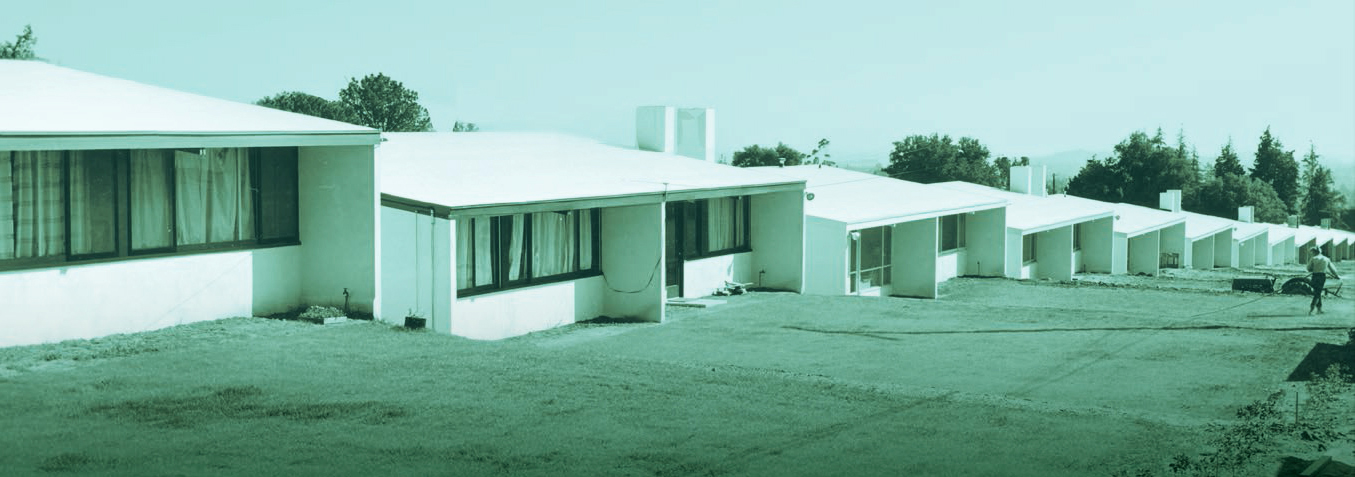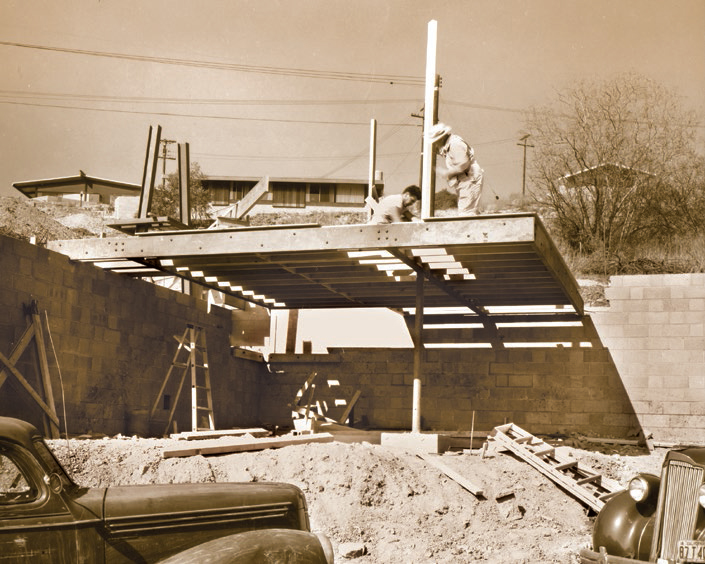First and Foremost
 |
|
|
By the early 1950s they began popping up everywhere—tracts of homes with flat or odd-angled roofs. Not just in California, but nationwide.
Suddenly, the average middle-class home seeker could visit an open house and put down a low (or no) down payment on the type of home that—until the end of World War II—had been available only to people who were sophisticated enough to desire cutting-edge architecture and could afford to hire an architect.
The stories behind these tracts share several commonalities. The people behind most of the first modern tracts were motivated less by a desire to make a buck than to achieve social goals. And, sadly enough, the failure of some of these schemes was caused by opposition from financiers and government officials.
Opposition was sometimes motivated by racism, with financing denied to communities that were intended to be racially integrated. And financial bureaucracies often shied away from new designs and new ways of living.
Consider what may be the very first tract of modern homes in the United States—at Altadena, California, 1946. The tract's 28 compact, big-windowed houses featured hidden courtyards that suggest the atrium developer Joe Eichler would add to his designs a decade later.
 |
The career of architect Gregory Ain, who designed and helped develop the 28 'Park Planned Homes,' shows how several streams of thought came together at the end of the war that would turn the dream of mass modern housing into reality.
Like many fellow progressive architects of the time, Ain believed society should produce good housing for all. In this view, he was part of a tradition that went back to the Wiener Werkbund, an association that called upon leading modern architects to build a community of 70 workers' homes in Vienna in 1932.
One of those architects, Richard Neutra, designed war housing in California during World War II—as did Ain. Ain's designs led to the Park Planned Homes that followed.
Among the many progressive architects who, in the 1930s, designed housing for farmworkers and, during the early 1940s, housing for defense workers was Bob Anshen, who would go on to work for Eichler, beginning in 1949.
Ain, Joe Stein, and Anshen and his partner, Steve Allen, were among many California architects who, before and during the war, had designed small, one-off custom homes they hoped would serve as models for mass housing.
 |
Significantly, the impetus to build Park Planned Homes came not from Ain but from the homebuyers. "A group of people went to architect Gregory Ain and asked him to model a unit of houses for them in Altadena," the Los Angeles Times wrote in December 1945, as the homes were being constructed.
It wasn't only in tracts that clusters of modern homes would be built. In New Canaan, Connecticut, after architect Philip Johnson built his now-famous Glass House in 1949, his colleagues followed, and soon the town was dotted with approximately 30 custom homes. In the early 1940s architect Marcel Breuer hoped to start a colony for modernists in Massachusetts, on Cape Cod.
As the war neared its end, planners and architects knew that new tract homes would soon carpet the landscape. The question was: How can we build not just tracts, but communities?
As the years went on, many other developers took up this charge, often with remarkable results. Among the earliest of the pioneering modern tracts are the ones profiled here.




